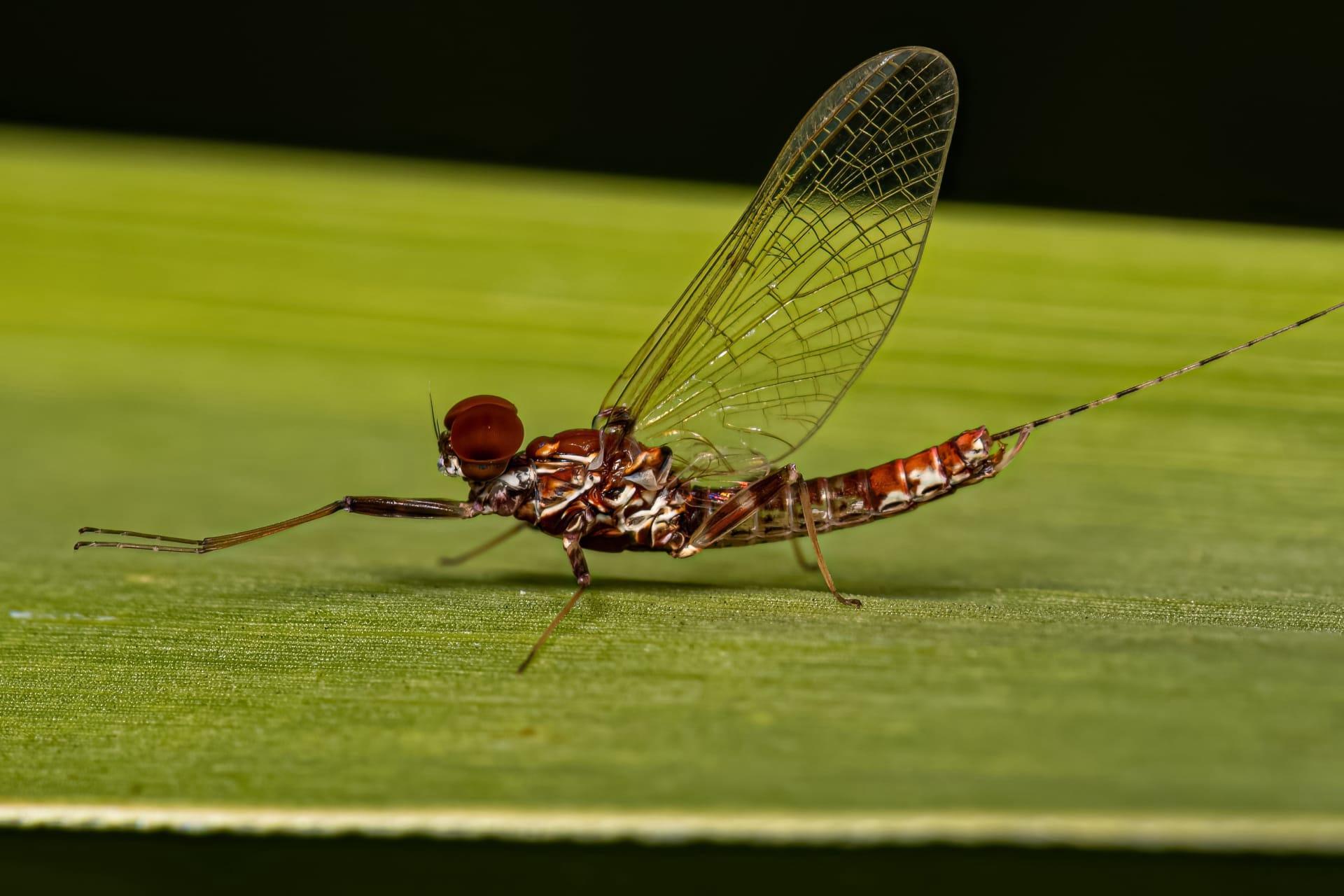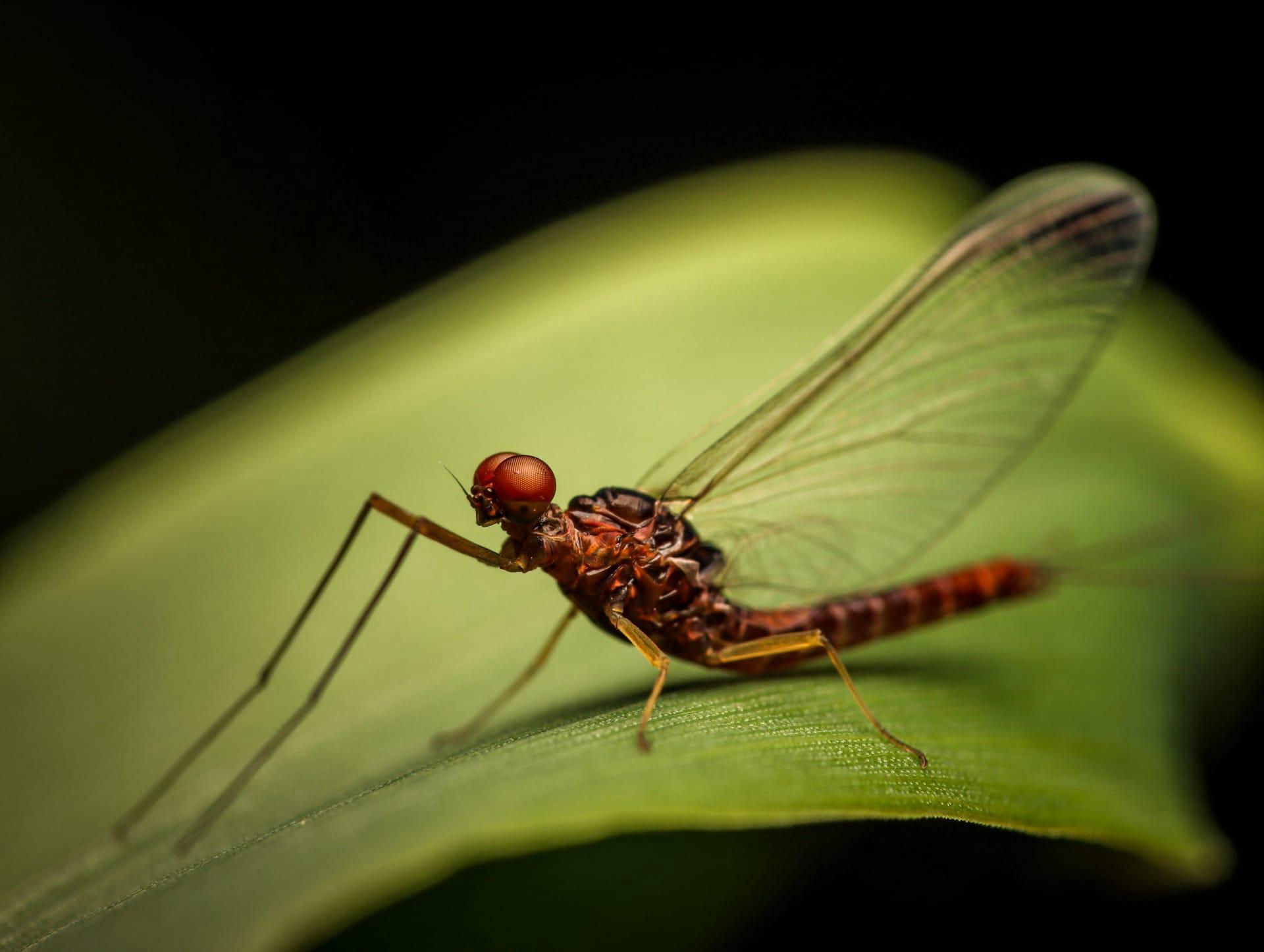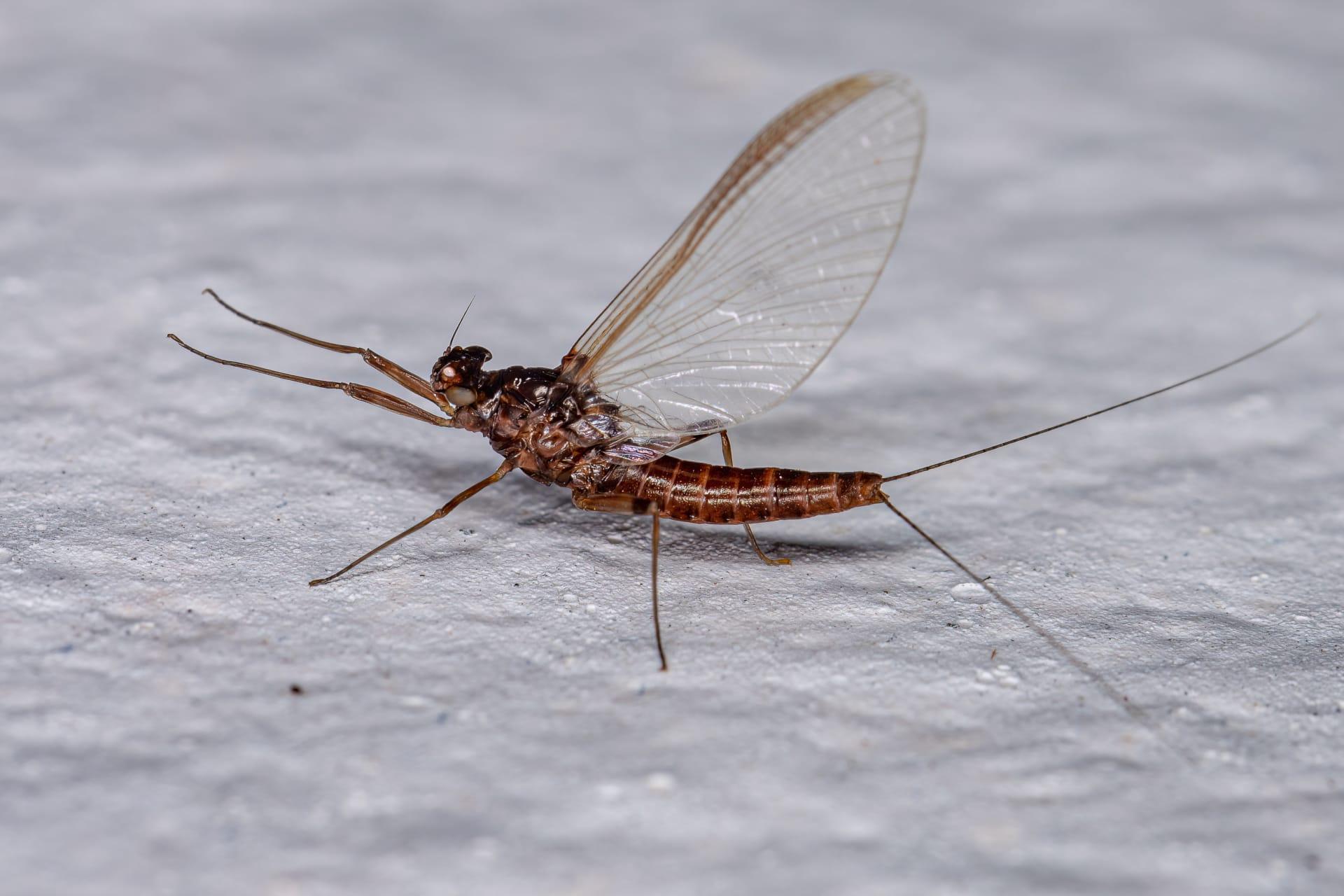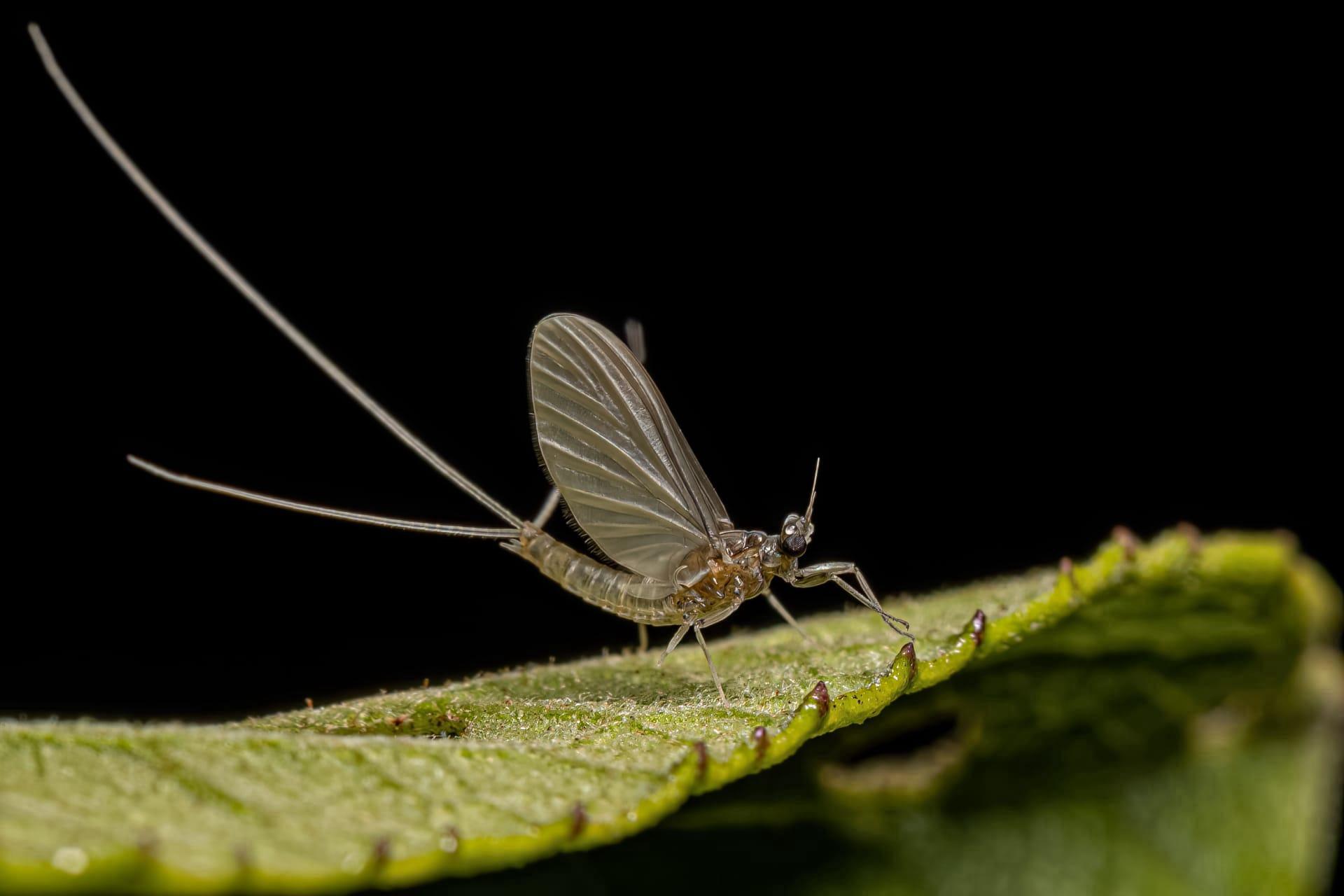Mayflies Characteristics
- Home /
- Mini Encyclopedia /
- Animal /
- Mayflies Characteristics
1
Mayflies, or Ephemeroptera, are fascinating insects known for their unique physiological characteristics. These delicate creatures generally measure about 0.5 to 1 inch (1.3 to 2.5 cm) in length, though some species can reach up to 4 inches (10 cm) including their tail. Their most striking feature is perhaps their incredibly short lifespan. Adult mayflies live for only 24 to 72 hours, a fleeting existence that has intrigued scientists and nature enthusiasts alike.
One of the most distinctive organs of mayflies is their gills, which are uniquely adapted for aquatic life. Located on the sides of their abdomen, these gills are leaf-like or feather-like in structure, allowing for efficient oxygen exchange in water. This specialized respiratory system enables mayfly nymphs to thrive underwater for about a year, a stark contrast to their brief adult life on land.

2
Question: Why do mayflies have such a short adult lifespan?
Answer: Mayflies have one of the shortest adult lifespans in the insect world, often lasting just a day or two. This brief lifespan is primarily due to their biological design, which focuses on reproduction. As adults, mayflies do not have functional mouths and cannot eat. Their energy reserves are accumulated during their nymph stage in water. Once they emerge as adults, their sole purpose is to reproduce, and they die shortly after mating and laying eggs.

3
Mayflies are known for their unique movement characteristics, particularly during their adult phase. They are famous for their graceful, synchronized swarms above water bodies, a dance-like movement that helps them find mates. These swarms are often seen at dusk, creating mesmerizing patterns in the sky. Mayflies are agile fliers, but they are not endurance fliers; their flight muscles are designed for short, rapid bursts rather than long-distance travel.
In their nymph stage, mayflies exhibit different feeding characteristics. They are primarily detritivores, consuming organic matter and algae in freshwater environments. This diet is crucial for accumulating energy reserves for their adult stage. Unlike their adult form, nymphs have functioning mouths and spend a significant amount of time foraging for food along riverbeds or lake bottoms.

4
Mayflies are predominantly found in freshwater environments, such as rivers, streams, and lakes. They prefer clean, oxygen-rich waters, making their presence an indicator of good water quality. The nymph stage of mayflies is entirely aquatic, where they often hide under rocks or sediment, playing a vital role in the aquatic ecosystem by recycling nutrients.
Reproduction is a central aspect of mayflies' life. After reaching adulthood, mayflies engage in a mass emergence, where thousands of individuals simultaneously take flight to mate. Females lay their eggs in water after mating, often dropping them while flying over the surface. These eggs settle to the bottom, hatch into nymphs, and the cycle continues. The entire process from egg to adult can range from a few months to a couple of years, depending on the species.

5
Book: "The Biology of Mayflies" by William L. Peters and Ian D. Burrow. This comprehensive book delves into the intricate world of mayflies. Published in the United States in the 1980s, it offers an in-depth look at various aspects of mayfly biology, including their physiology, behavior, and ecology. The authors, both renowned entomologists, provide a detailed exploration of mayfly species across different regions.
Book: "Mayflies: An Angler's Study of Trout Water Ephemeroptera" by Malcolm Knopp and Robert Cormier. This book, published in Canada in the 1990s, is a unique blend of entomology and angling. It offers insights into how understanding mayflies can enhance the experience and success of trout fishing. The authors discuss mayfly behavior, life cycles, and their importance in the freshwater ecosystem, making it a fascinating read for both anglers and nature enthusiasts.